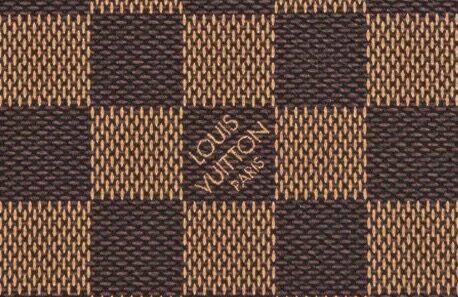The High-Stakes Game of Licensing
Licensing in the luxury sector is a double-edged sword. It can build global scale or quietly dismantle exclusivity. For fashion brands where reputation is the ultimate currency, licensing can either multiply value or drain it entirely.
In India, the risks are amplified. With a counterfeit market valued at approximately ₹40,000 crore annually, weak licensing is more than a loophole; it is an open invitation to brand erosion. ¹ As global maisons and Indian designers expand, licensing is no longer a shortcut. It is either a strategy or a failure.
Why Licensing Matters in India’s Luxury Moment
India’s luxury fashion market is undergoing a dramatic transformation. By 2030, it is projected to reach USD 8.5 billion, ² driven by a rising middle class, global exposure, and digitally savvy consumers. The dynamics are reshaping how brands, both international and domestic, view licensing.
- Global maisons such as Gucci, Louis Vuitton, Chanel, and Prada already operate in India, often through licensing, franchising, or distribution models.
- Indian designers such as Sabyasachi, Manish Malhotra, and Anita Dongre increasingly license their names across eyewear, perfumes, jewellery, and home décor.
- Collaborations like H&M x Sabyasachi highlight how licensing underpins cross-border experiments, with contracts governing everything from IP ownership to revenue splits.
Licensing allows brands to expand without the heavy capital expenditure of direct retail. But for luxury brands, where scarcity, quality, and control define value, a poorly structured license can be catastrophic.
IP Risks: Why Mismanaged Licensing Can Erode Luxury’s Core Value
- Trademark Dilution and Misuse
Exclusivity is the bedrock of luxury. Over-licensing or poorly supervised licensing risks diluting that value. A cautionary example lies in Gucci’s eyewear licensing. In the 1990s, early partnerships failed to uphold consistent quality, prompting reputational concerns. Gucci later restructured its eyewear licensing through Safilo with stringent controls, reaffirming the importance of license management.³
- Counterfeiting and Grey Market Goods
Counterfeiting is perhaps the gravest risk. India’s counterfeit economy is estimated at ₹40,000 crore annually, with luxury goods forming a significant share.¹ In Christian Dior Couture v. Wishful (Delhi High Court, 2022), Dior succeeded against counterfeit perfumes being sold under its mark. The case illustrates how counterfeiters exploit gaps in supply chain oversight, sometimes aided by weak licensee monitoring.⁴
Parallel imports, or “grey goods,” compound the problem. A licensee’s lax distribution may unintentionally create leakages into unauthorised channels, undermining pricing and exclusivity.
- Design and Trade Dress Infringements
Luxury brands are as much about aesthetics as trademarks. Elements like packaging, colour schemes, or boutique layouts qualify as “trade dress.” If licensing contracts do not explicitly cover trade dress enforcement, infringers exploit these gaps. For instance, luxury perfume packaging has frequently been copied in India, forcing licensors to rely on trade dress claims in addition to trademark law.
- Quality Control Challenges
Under the Trademarks Act, 1999, licensors must exercise quality control over goods sold under their mark.⁵ If they fail, the mark risks abandonment. For luxury, where even minor quality lapses can erode consumer trust, licensees must be bound by contractual audits, sample approvals, and strict material specifications.
The Legal & Regulatory Web in India
- Trademarks Act, 1999 –Recognises “permitted use” by licensees but requires clarity on scope, territory, and quality control.
- Competition Act, 2002 – Restricts anti-competitive licensing practices, such as resale price maintenance or unreasonable territorial restraints.
- FDI Policy – Allows 100% FDI in single-brand retail, subject to sourcing rules. Many global luxury brands structure licensing within these parameters.⁶
- Contract Law & Arbitration – Indian courts face significant backlogs; hence, luxury licensing agreements almost always include international arbitration clauses for dispute resolution.
Strategic Insights for Brand Owners
- IP First, Licensing Second
Brands must register trademarks, designs, and trade dress in India before licensing. Failure has proven costly; several foreign fashion houses have faced “trademark squatting” by opportunistic registrants who pre-empted their market entry.
- Contracts That Cover Every Angle
Licensing agreements should clearly define:
- Scope of rights (products, geography, duration).
- Quality standards, inspections, and audits.
- Ownership of derivative IP (new designs or collaborations).
- Termination clauses and post-termination obligations.
- Quality Control as Brand Protection
Hermès offers a best-practice model: every licensed product category undergoes rigorous vetting, ensuring craftsmanship remains uncompromised. ⁷ Such control not only protects legal rights but also safeguards consumer perception.
- Counterfeit Defence Mechanisms
Licensors should record trademarks with Indian Customs under the IPR (Imported Goods) Enforcement Rules, 2007, enabling border officials to block counterfeit imports. In addition, monitoring online marketplaces and leveraging authentication tools like blockchain or QR codes can help protect against digital counterfeiting.
- Think Long-Term, Not Quick Revenue
Short-term licensing gains often backfire. Overexposure risks collapsing brand prestige. Brands should focus on extensions consistent with their ethos, eyewear, fragrances, or home décor while avoiding categories that dilute luxury positioning.
Policy and the Future of Licensing
- Specialised IP Adjudication
Dedicated IP benches in Delhi and Bombay High Courts mark progress, but India needs faster and more specialised resolution of licensing disputes.
- Stronger Border Enforcement
Luxury brands are disproportionately harmed by counterfeit imports. Customs recordation procedures must be streamlined and digitalised to ensure effective enforcement under the 2007 Rules.
- Boosting Indian Designers Abroad
Policy support for Indian designers seeking to license internationally could elevate India’s presence in the global luxury ecosystem. Italian and French maisons achieved global dominance partly through licensing; Indian brands could follow suit.
- Digital & AI Licensing
As fashion expands into the metaverse, luxury brands are licensing virtual goods, NFTs, and AI-generated designs. India’s legal framework must evolve to protect IP in these emerging domains, anticipating disputes over digital replicas and derivative rights.
Conclusion
Licensing in India offers luxury fashion brands a powerful lever for growth and collaborations, but it is fraught with intellectual property, contractual, and reputational risks. The Dior Wishful case illustrates the dangers of counterfeit penetration, while Gucci’s eyewear restructuring highlights the benefits of stringent control.
Ultimately, licensing in India should not be treated as a shortcut to expansion. For global maisons and Indian designers alike, it is a strategic art balancing scale with the uncompromising protection of reputation, exclusivity, and consumer trust.
Endnotes
- FICCI CASCADE, Illicit Markets: A Threat to Our National Interests 2024 Report (New Delhi: FICCI, 2024).
- Bain & Company, Luxury Market in India: Unlocking Growth (2023).
- “Gucci Renews Eyewear License with Safilo,” WWD, March 15, 2019.
- Christian Dior Couture v. Wishful Retail Pvt Ltd, Delhi High Court, 2022.
- Trademarks Act, 1999 (India), § 2(1)(r).
- Government of India, Consolidated FDI Policy, DPIIT, 2020.
- “How Hermès Maintains Control over Craftsmanship,” Business of Fashion, October 2021.



















